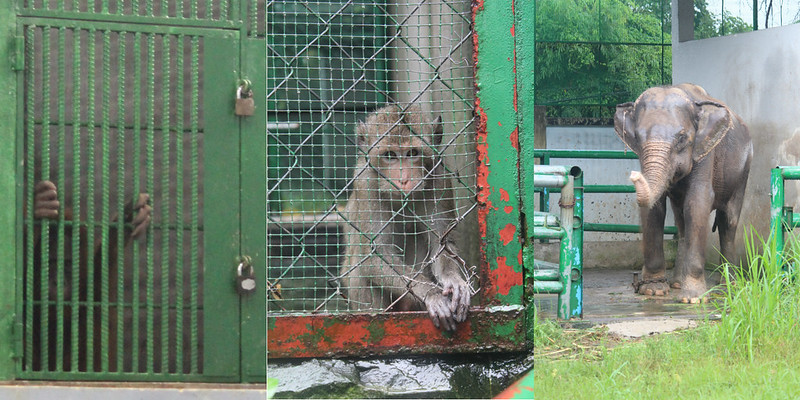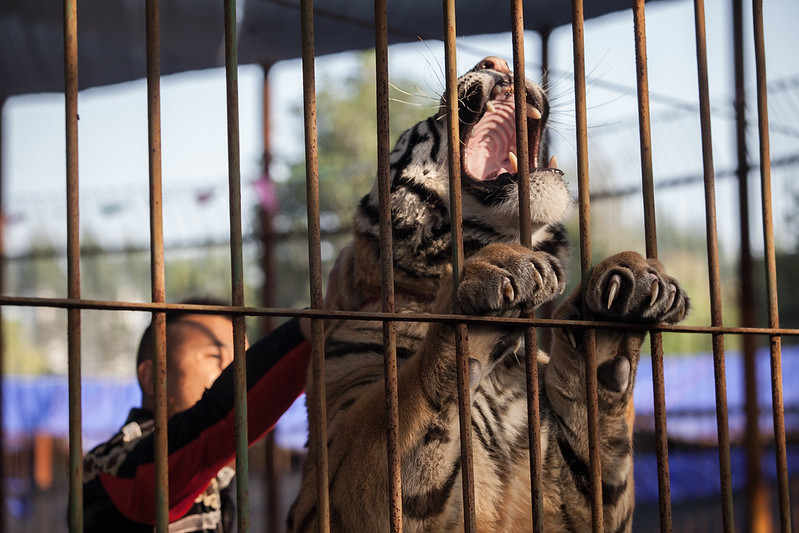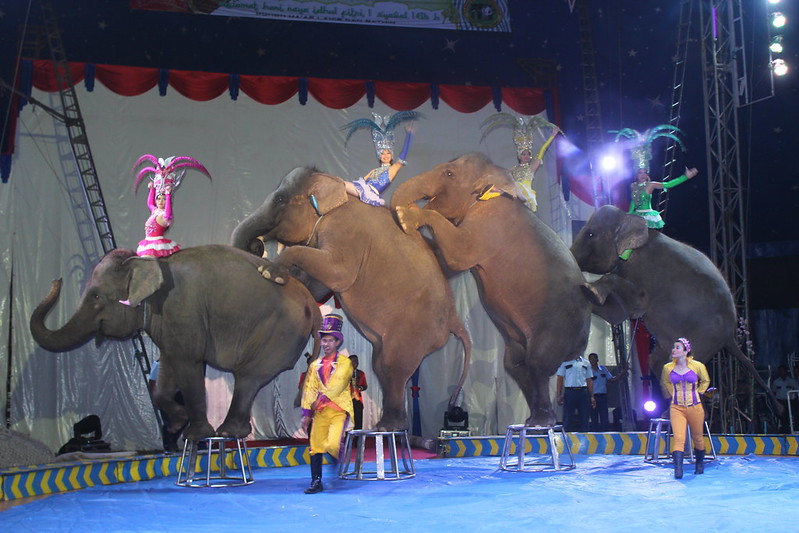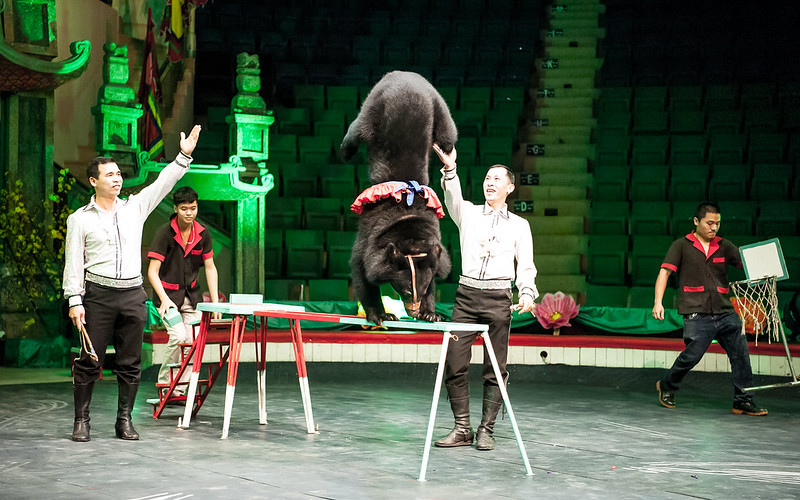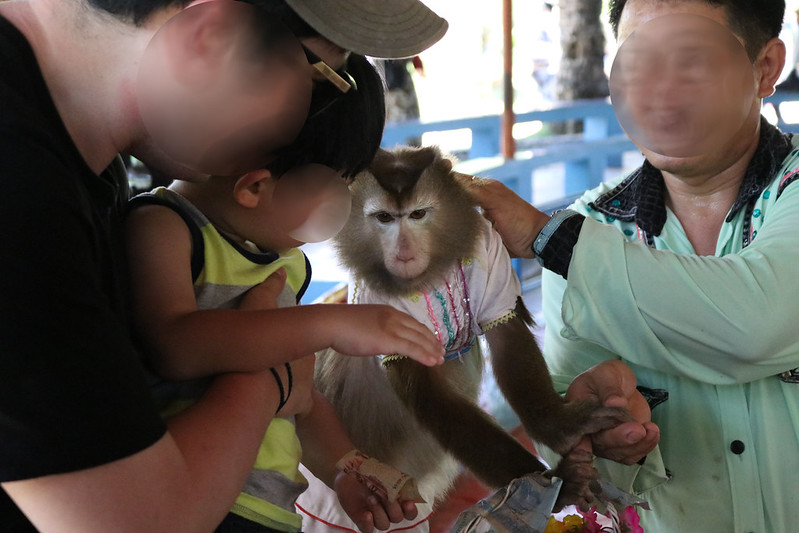Why animals should not be in circuses
10 December 2022
The truth about animals in circuses is that they are abused and endure lives of complete misery, while some are even poached from the wild, purely for entertainment.
Circuses around the world continue to use animals in their shows and very few countries have banned the practice. So what is the problem with wild animal performance? Here are the facts about circuses.
Where do circus animals come from?
This is the million-dollar question. In Vietnam, we’ve seen species which are protected by national and international law performing in circuses. This includes elephants and moon bears.
Laws state that these species cannot be poached from the wild or sold for commercial purposes. We also know that no bear bile farmers in Vietnam were able to successfully breed captive bears – so where are the circus animals coming from?
The truth is some are highly likely to have been illegally poached from the wild and sold into circuses, while other animals have been bred for the entertainment industry.

How are circus animals treated?
In circuses, animals are made to perform unnatural tricks which no individual would willingly carry out.
Elephants are made to stand on one leg and spin in circles – often while standing on top of small stools. These are actions elephants have never been observed carrying out in the wild precisely because they cause long-term damage to the animals’ physiology.
It is well documented that elephants are forced to perform these actions by being beaten with bullhooks, while young elephants are savagely constrained and beaten in a process known as “the crush”, which breaks their spirit and forces them to comply.
Big cats are popular in the circus, but many have their teeth and claws removed rendering them harmless to their abusers. They are "trained" with whips which teach them to fear the ringmaster and not attack.
Our investigations in Asia have uncovered moon bears riding motorbikes, macaques riding dogs and orangutans spinning plates. These actions are so unnatural that no animal can be encouraged or instructed to carry them out – they must be forced. Initially this is done with violence, then with the promise of food. As a result, many circus animals are also underfed to keep them hungry and eager to please.
Together we can rescue animals from their miserable life:

Do animals like being on stage?
The wild animals commonly abused in circuses are extremely stressed by circus conditions. The loud noise of the music, the cheers of the crowd and the dizzying lights all disorientate and cause stress to wild animals.
Over prolonged periods this can result in abnormal behaviours and health problems related to anxiety.
While it is possible that domesticated dogs could enjoy the stimulation of certain types of circus training and performance, for wild species such as tigers, bears and macaques, performing on stage is deeply traumatic.
Animals Asia does not support the use of any animals – including dogs – in circuses due to widespread abusive training techniques and poor living conditions.
How do circus animals live?
The living conditions at circuses consistently fail to meet the animals’ most basic needs. When the show stops, the animals typically return to isolation in small, barren cages which give them no opportunity to carry out behaviours natural to their species, or to interact with their own kind.
Animals Asia’s investigation into animal circuses in Vietnam found 100% of facilities failed to meet the animals’ basic needs. We found bears rocking in tiny cages – a well-known sign of stress and mental health disorders – and macaques chained by their necks.
Circus animals are often transported over large distances with circuses in Indonesia even transporting dolphins by truck and plane which is clearly unsuitable for the species.
For full information read our circus report here.
What’s good about animal circuses?
As with any industry which creates financial gain, some people try to defend animal circuses. They say the animals are stimulated by training and performance, but all the evidence and the experts disagree.
Defenders of animal circuses also argue that seeing animals perform is a form of education which raises awareness and appreciation of wild species. But the truth is very different.
In reality, animal circuses teach our children nothing. The behaviours they see are completely unnatural and give an entirely false impression of the lives and needs of animals. Seeing animals abused on stage only teaches people that animals are here for human entertainment and that we can treat them in any way we please, regardless of their emotions and needs. Is this the lesson we want to teach our children?
BACK
